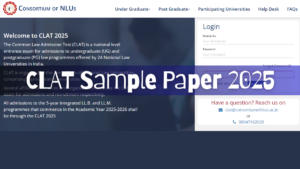Table of Contents
Uses of Internet in Education
The Uses of Internet in Education is extremely important. In several ways, the internet has transformed education, making it more accessible, participatory, and versatile. Without question, in this day and age, everyone likes Google for their queries, concerns, or doubts. Popular search engines such as Google, Yahoo, and others. It is beneficial not only in our personal life but also in our work lives. The Internet contains a plethora of information that may be accessed at any moment. The internet has advanced technology, communication, and online entertainment. Students require the internet to look for information about tests, syllabuses, and outcomes, among other things. Let us investigate the good benefits of the Uses of Internet in Education.
Also Read, TCP / IP Full Form – Transmission Control Protocol / Internet Protocol
Uses of Internet in Education
Here are some key uses of the internet in education:
Access to Information: The internet provides an extensive repository of information, allowing students and educators to access a vast array of resources such as articles, research papers, textbooks, and multimedia content.
Online Research: Students can conduct research on various topics, access academic databases, and use search engines to find information quickly and efficiently.
E-Learning and Online Courses: The internet offers a plethora of online courses, from MOOCs (Massive Open Online Courses) to specialized programs. These courses provide flexibility in terms of scheduling and location, making education more accessible to a global audience.
Distance Learning: The internet enables students to earn degrees and certificates from institutions around the world without physically attending classes. This is particularly beneficial for individuals who cannot relocate or have other commitments.
Collaborative Learning: Online platforms facilitate collaborative projects and discussions among students and educators, fostering a sense of community and allowing for diverse perspectives.
Digital Libraries: Digital libraries and online archives make historical documents, rare books, and other resources accessible to students and researchers, regardless of their location.
Multimedia Learning: Educational websites, videos, animations, and interactive simulations enhance learning by catering to various learning styles and making complex concepts easier to understand.
Assessment and Testing: Many educational institutions use online platforms for conducting quizzes, exams, and assessments. These tools provide instant feedback and automate grading processes.
Communication: Email, discussion forums, and instant messaging enable students to communicate with instructors and peers for questions, discussions, and project collaboration.
What is Computer?- Check Its Functions and Uses
Teacher Resources: Teachers can access lesson plans, educational apps, and teaching materials online to enhance their instructional strategies.
Virtual Labs: Students in science and engineering fields can perform experiments and simulations in virtual laboratories, which can be cost-effective and provide access to equipment that may not be available locally.
Global Perspective: The internet allows students to interact with individuals from different cultures and backgrounds, broadening their worldview and fostering intercultural understanding.
Professional Development: Educators can participate in online workshops, webinars, and communities of practice to continuously enhance their teaching skills.
Personalized Learning: Adaptive learning platforms use algorithms to tailor educational content to individual students’ needs and progress.
Online Educational Games: Educational games and gamification elements can make learning more engaging and enjoyable for students of all ages.
Open Educational Resources (OER): OER are freely accessible, openly licensed educational materials that can be used, adapted, and shared by educators, reducing the cost of textbooks and other resources.
Career Development: The internet offers access to resources for career planning, job searching, and skill development, helping students prepare for the workforce.
Special Needs Education: Online tools and resources can be customized to meet the needs of students with disabilities, making education more inclusive.
The internet has transformed education by expanding access to information, offering diverse learning opportunities, and enhancing communication and collaboration among students and educators worldwide. Its impact on education continues to evolve with advances in technology and digital learning platforms.
URL Full Form in Computer and HTML
Uses of the Internet in Education in India
Role and Uses of the Internet in Education: Nowadays, apart from essential commodities, education is also an integral part of our lives. It’s important to note that in a speedy era of ours, where everything is at pace, education is accompanied by the internet to fulfil the sole purpose of providing vast knowledge and that too by saving much of time.
The Internet is our generation’s most valuable tool, supporting us not just in our personal lives but also in our professional endeavors. It is commonly used for educational purposes to gather information, conduct research, and broaden one’s knowledge in a variety of fields.
Uses of the Internet in Child Education
In education, the internet is extremely important. Without a doubt, in today’s world, everyone favours Google for their questions, problems, or concerns. People use popular search engines like Google, Yahoo, and others because they provide quick and easy access to a great amount of information in just a few seconds. It has a variety of information that may be accessed at any moment.
Technology, communication, and online entertainment have all improved thanks to the internet because the credit goes to the revolution that the internet brought with its introduction.
It has become a more significant and powerful instrument in the world today, and it is desired by everyone. For one reason or another, everyone requires access to the internet. Students use the internet to look up information about tests, curricula, and outcomes, among other things. You can also use these student success steps to help you succeed in school.
The importance of the internet in education to students implies that it makes it easier for them to conduct research and review material taught in school. It is used by people based on their needs and interests.
Read About: Social Issues and Problems of India
Read About: What are digital Payments?
Read About: Amendments of Indian Constitution
10 Uses of Internet in Education
1. Cost Effective and Affordable Education
2. Used in Generally training of brain
3. Easy Sharing of knowledge
4. Helps in Disseminating knowledge
5. Helps Distance learners
6. Used in Virtual classrooms
7. Used for spread awareness for Combating poverty
8. Helps in Digitized texts
9. Effective Teaching and Learning Tool
10. Easy Access to Quality Education
Role of Internet in Education
Education that is both cost-effective and affordable
The high expense of education is one of the most significant impediments to learning. The Internet increases education quality, which is one of the pillars of a nation’s long-term development. Educational films on YouTube are a good example.
Increases interactions between teachers and students
With the help of social media, messaging applications, and chat forums, students may maintain continual contact with their teachers or other classmates via the internet. Parents can speak with instructors and school officials about their children’s academic performance. Students can learn new things and broaden their knowledge by interacting with like-minded people on forums.
Tool for Effective Teaching and Learning
The Internet has evolved into a critical tool for effective teaching and learning. Teachers can employ animation, PowerPoint slides, and graphics to catch the interest of their pupils.
Digital Media Interaction is a term used to describe how people interact with digital media.
Digital bulletin boards save paper and allow for the presentation of films and audios to draw students’ attention.
The most recent information
For every subject, there is a vast amount of knowledge available. It keeps us informed about the most recent developments in the fields in which we are interested.
Multimedia as a tool for learning
It aids pupils in their learning process by simplifying their knowledge. It also aids in visualising what is being taught in school by the teachers.
Discuss the applications of internet resources of education
Internet resources have transformed education in numerous ways, making learning more accessible, interactive, and flexible. Here are some key applications of internet resources in education:
Online Courses and MOOCs (Massive Open Online Courses): These platforms offer a wide range of courses on various subjects, allowing learners to access high-quality education from top universities and institutions around the world. Examples include Coursera, edX, and Khan Academy.
E-Learning Platforms: Schools and universities have adopted online learning management systems (LMS) like Blackboard, Canvas, and Moodle to facilitate course management, content delivery, and assessments.
Open Educational Resources (OER): These are freely accessible educational materials such as textbooks, videos, and interactive simulations. OER makes education more affordable and accessible to learners of all backgrounds.
Virtual Labs: Internet resources enable students to access virtual laboratories, where they can conduct experiments and gain practical experience in a wide range of scientific fields.
Educational Websites and Portals: Numerous websites offer educational content, including tutorials, articles, and quizzes, to supplement classroom learning and provide additional resources for self-study.
Video Conferencing and Webinars: Platforms like Zoom and Google Meet have become essential for remote and hybrid learning, allowing students to participate in live classes, discussions, and seminars from anywhere with an internet connection.
Collaborative Tools: Online tools like Google Workspace (formerly G Suite) and Microsoft Teams facilitate collaboration among students and educators, enabling real-time document sharing, editing, and communication.
Social Media for Learning: Social media platforms can be used for educational purposes, such as creating educational communities, sharing resources, and engaging in discussions about various topics.
Gamification and Educational Games: Internet resources have given rise to educational games and gamified learning platforms that make learning more engaging and interactive.
Adaptive Learning Systems: Internet-based adaptive learning platforms use data and algorithms to personalize learning experiences for students, adjusting the difficulty of content based on individual progress and needs.
Educational Podcasts and Webcasts: Podcasts and webcasts offer a flexible way to consume educational content on the go, covering a wide range of subjects and allowing learners to multitask.
Digital Libraries: Online libraries, such as Project Gutenberg and Google Books, provide access to an extensive collection of books, articles, and research papers, supporting research and self-study.
Language Learning Apps: Language learning apps and websites like Duolingo and Rosetta Stone enable learners to acquire new languages at their own pace.
Remote Access to Research and Journals: Internet resources grant students and researchers access to a vast array of academic journals and research papers, fostering academic exploration and inquiry.
Specialized Educational Software: Various software applications and tools cater to specific subjects and skills, such as mathematics, programming, graphic design, and more.
Online Certification and Credentialing: Internet resources have made it possible to earn certifications and credentials in various fields through online exams and coursework.
Teacher Professional Development: Teachers can access online resources, webinars, and communities to enhance their skills and stay updated with the latest educational practices.
Global Collaboration: Internet resources facilitate international collaboration among students and educators, enabling cross-cultural learning experiences and the exchange of ideas.
In summary, Internet resources have revolutionized education by expanding access to knowledge, fostering interactivity, and providing flexibility in learning. These applications continue to evolve, making education more inclusive and adaptable to the changing needs of learners worldwide.


 JKBOSE 10th Result 2024 Bi-Annual Out fo...
JKBOSE 10th Result 2024 Bi-Annual Out fo...
 CLAT Previous Year Question Papers (2024...
CLAT Previous Year Question Papers (2024...
 CLAT Sample Paper 2025 Out, Download Sam...
CLAT Sample Paper 2025 Out, Download Sam...






























